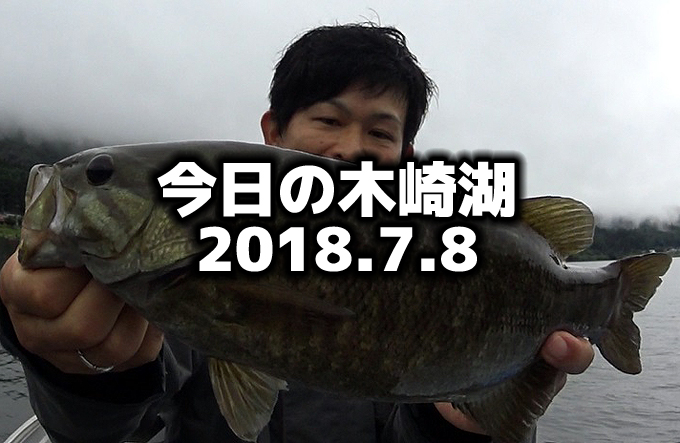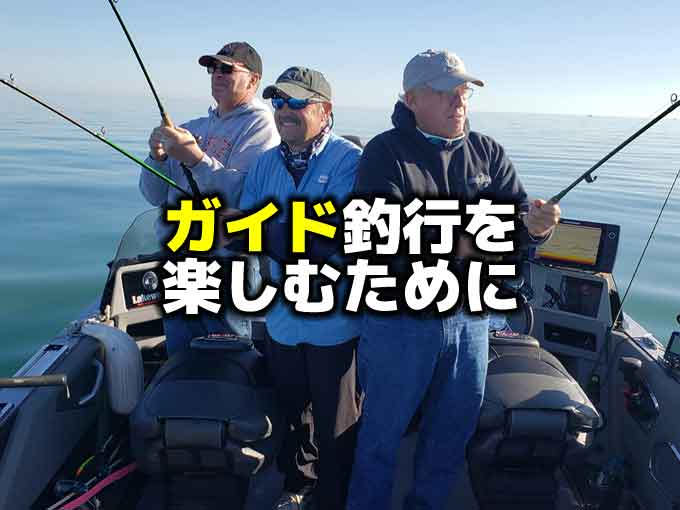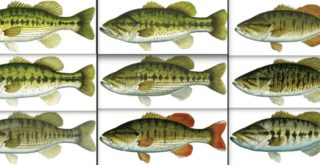ベイトリールでバックラッシュしないキャスト練習法

Photo by scout.com
こんにちは!店長の小山です!
本日は海外サイトより、”Learn How to Cast a Baitcaster”という記事を引用してご紹介いたします。
引用先:scout.com”Learn How to Cast a Baitcaster”ByJASON SEALOCK Jan 3, 2011(海外サイトです)
※この記事は、2016年5月20日に掲載したものを再編集したものです。
ベイトリールのキャスティング。初めてベイトリールでキャストする時は緊張したものです。私はいきなり現場では使わず、家の外で適当なシンカーだけを結んで練習したと思います。
そうです。なぜそうしたかと言えば、バックラッシュという問題点があることを知っていたからです。みなさんはそんなことはありませんでしたでしょうか?
しかし練習と言っても、フルキャストするのも危ないですし、水面を前にしないとなんとなく気分が良くないんですよね。そんなわけで、練習はブレーキセッティングも何もかもが中途半端だったような気がします(笑)
そしてフィールドに出てやってみるのですが、練習と現場では大違い。バックキャストのスペースがなかったり足場が悪かったりと、今までスピニングでは普通にやっていたことが、バックラッシュのプレッシャーがあることでこんなにも難しく感じるのだと思いました。
最近のベイトリールは、初心者の方にも安心して使ってもらえるよう、ブレーキセッティングも簡単で効果的なものが多く開発されてきました。スプールの回転をコンピューターで制御できたり、バックラッシュを防止する「サミング」をしなくても、バックラッシュしないブレーキというのがウリのものまであります。
では、もうベイトリールでの練習は必要なくなってしまうのでしょうか。
この記事は、アメリカのフィッシングメディア「Wired2Fish」のもので、プロが行うベイトリールのキャストと、プロのキャストに近づくための練習方法が書かれています。
ベイトリールのキャストがもっと上手になりたい、そんな方はぜひ読んでみてください。
キャスティング練習の準備
Baitcasters continue to get better and better. But the fact remains you can get a professional overrun, a.k.a. a backlash or birds nests on any cast if you don’t have the brakes and spool tension adjusted exactly right for the conditions. The more advanced reels have tension control, centrifual brakes, pinch brakes and magnetic brakes. Which if applied together with the magic formula, that super-secret granddaddy recipe, they will improve your casting dramatically.
And no matter what anyone says, most good pros cast further because they don’t use any of these precautionary adjustments. Instead, they learn to control with their thumbs better than most, with the brakes off and the tension knob loose.
When I first learned to throw a baitcaster, it was an act of frustration. Either I couldn’t cast if far enough, or I cast as far as it would go before a web of overspun monofilament clogged the reel. If you’re about to learn to cast a baitcaster or you want to improve specific casts like skipping baits with a baitcaster, there is a way to minimize the frustration during the process.
All you need to do is reduce the amount of overrrun. This is easily accomplished with electrical tape and a pair of scissors. Usually about 3 to 4 inches of electrical tape will work. Cut a nice straight piece of tape with the scissors.
Now with the rod and reel in hand in your practice area. Make your longest cast with a practice plug or old lure without hooks. Now pull out another 10 feet or so of line. Then take the piece of tape, and while pushing the end of the line coming off the spool to one side of the spool or the other, place the tape on the line as you turn the spool.
The object is to wrap the tape onto the line in the same direction that it will reel your line up. This will take a little practice to get it right. But once you have the tape properly placed, press it onto your line snuggly with your thumb. Then reel up all the line.
The reason a bird’s nest is so hard to get out is because it spins line off the spool so deep in a very small space. With the tape, the bird’s nest isn’t able to go deep into the spool.
ベイトリールは改善され続けています。しかし実際には、どんなプロであっても、ブレーキ調整とスプールの回転を条件に合わせて正確に調整されないと、別名「鳥の巣」と言われるバックラッシュをすることがあります。より高級なリールには、メカニカルブレーキ、遠心ブレーキ、マグネットブレーキがあります。
そして誰がなんと言おうと、多くのプロアングラー達は、これらを予防する調整を一切使用していないため、さらに遠くへキャストしています。ブレーキをオフにし、メカニカルブレーキを緩める代わりに、彼らは親指でコントロールすることを学びます。
私が初めてベイトリールでのキャストを学んだとき、それはストレスのたまるものでした。充分に遠くまでキャストできないのです。また、遠くへ飛ばそうとするとラインが網の目のようになりリールに詰まってしまうのです。ベイトリールでキャストしようとしている場合、またはベイトリールでスキッピングなどの特定のキャストをもっと上手くなりたいとき、練習中の不満を最小限に抑える方法があります。
あなたがする必要があるのは、オーバーランの量を減らすことだけです。これは、ビニールテープとハサミだけで簡単にできます。だいたい9~10センチのビニールテープが必要ですので、ハサミでテープをまっすぐにカットしてください。
そして今すぐあなたが練習できるフィールドへロッドとリールを手に出掛けてください。そこでまずはフックのない練習用のプラグや古いルアーでフルキャストをします。そこからさらに3メートルほどラインを引っ張り出してください。次に先ほどのテープを取り出し、スプールから出ているラインの端をスプールに押さえるようにテープを置き、スプールを回しながらテープを貼っていきます。
このとき、ラインを巻き上げるのと同じ方向にテープを貼っていくことです。うまくいくには少し練習が必要かもしれません。そしてテープをうまく巻けたら、親指でしっかりとラインに押しつけてください。その後、すべてのラインを回収して巻き取ります。
バックラッシュを直すのが難しい理由は、非常に小さなスペースなのにスプールの奥からラインが出てきてしまうからです。テープを貼っておけば、バックラッシュしてもスプールの深くからラインが出てくることもできません。
実際の練習
Now you’re ready to learn to cast your baitcaster like a pro. The thing to remember is that your thumb can work better than any brake system out there because your brain is attached to it. Most braking systems employ centrifugal, pinch, magnetic or some combination of the three.
The pinch and centrifugal brakes function similarly in that the maximum speed on a normal cast is the instant the lure leaves the rod tip. So the centrifugal force is at its greatest and centrifugal brakes spin out to the edge of the spool to keep control of the line as it starts out of the reel. As less centrifugal force is applied as the cast continues the brakes apply less pressure.
Magnetic brakes control the spool speed evenly so as the speed of the lure to the target slows the spool slows down because the lure is applying less force on the spool as the lure slows down.
Now if you turn all of these things off, the spool will spin much faster than the lure is traveling after the initial instant the cast begins. The spool is launched into gear at a rapid pace with nothing to slow it even though the lure is slowing down the entire length of the cast because of gravity and other factors (wind resistance, water resistance while skipping, etc.).
The only thing to keep the spool in check with the lure’s decreasing speed is your thumb. So your thumb pressure needs to be applied with the understanding the cast is at maximum force at the beginning of the cast and it minimizes throughout the cast.
This means you need sharp pressure as you start the cast or your reel will instantly over wind its spool. As the lure continues, you back off the pressure with your thumb and feather the line out before stopping it just as it enters the water.
さて、あなたはプロのようなキャストを学ぶ準備が整いました。覚えておくべきことは、あなたの頭脳というコンピューターが動かすあなたの親指は、どんなブレーキシステムよりも優れているということです。ほとんどのブレーキシステムは、遠心力、締め付け力、磁気力、またはこれらの3つの組み合わせを採用してできています。
メカニカルおよび遠心ブレーキは、通常のキャストにおける最大スピードになるロッドティップからルアーが離れる瞬間から機能します。遠心力が大きくなると、遠心ブレーキはスプールエッジまで飛び出し、リールからラインが出始めた時から制御を維持します。キャストが後半になるにつれて遠心力が減少するので、ブレーキはより少ない圧力で作用していきます。
マグネットブレーキはスプールの速度を均一に制御しますので、ルアーがターゲットに近づくと失速します。なぜなら、ルアーが減速するにつれてルアーがスプールにかける力も小さくなるのに、ブレーキは均一の力で掛かり続けるからです。
あなたがこれらのブレーキすべてをオフにすると、スプールは、キャストが始まった瞬間からルアーが飛んでいくよりも速く回転しようとします。重力やその他の要因(風の抵抗、スキッピングの時は水の抵抗)により、ルアーがキャスト全体を通して減速していくにもかかわらず、スプールのスピードは急に遅くなることはありません。
ルアーの減速スピードに合わせてスプールスピードを調節する唯一の方法はあなたの親指です。ですので、あなたの親指の力は、キャストの始めに最大の力が必要であること、そしてキャストを通して最小限に抑えることを理解する必要があります。
これは、キャストを始めた瞬間に鋭い圧力が必要であること、またリーリングを開始する前に再び必要となることを意味します。ルアーが飛び続け、着水するちょうどその時、ラインに優しく触れてラインの放出を止め、そして親指の力を抜きます。
この方法のメリットとデメリット
Most pros never let their thumb completely off the line as it unspools on a cast. That’s asking for trouble. It’s also not something you’ll master in 10 casts. But by using the tape, you can quickly pick out a short overrun and make another cast. It takes a lot of the frustration out of learning to cast a baitcaster or mastering more difficult casts like shooting jigs under docks, roll casts to precise targets.
Start slow. Make a short cast under control. Then try to do it again but 5 feet farther. At the end you should be slinging as hard as you can to get that additional 10 feet on your cast before it hits the tape.
One note, I don’t recommend this for actually fishing unless you’re going to be doing short pitches all day and you have someone who maybe isn’t as skilled with a bait caster. That way they can flip and pitch with you all day without backlashes.
The problem anglers will encounter is if you get bit at the end of a cast and the fish pulls drag and takes off, the tape is going to come into play. So just keep that in mind. Also electrical tape gets sticky and gooey in heat, so it can put a residue on your line over time.
But it’s a dynamite way to practice your casting without picking backlashes and destroying your line. Once you train yourself on how the line should feel on your thumb throughout each cast, it will soon become second nature. It will also make buying reels easier because all the adjustments seem to be a little different from one maker to the next. When you take the adjustments out of the equation, you can cast far with any good quality reel.
多くのプロは、キャストしたときに親指を完全に外してしまいません。それはトラブルの素になるからです。これは10回程度のキャストでマスターできるものでもありません。しかしテープを使用することで、わずかなオーバーランによるバックラッシュの始まりに気付くことができ、次のキャストに切り替えることができます。桟橋の下へジグを撃つ、ターゲットに正確にロールキャストするなどといった、より困難なキャストを習得するときのストレスを少なくします。
まずはゆっくり。ショートキャストをコントロールできるようにする。その次は、もう1.5メートル先へキャストしてください。最終的に、さきほどテープを貼ったところ、フルキャストよりさらに3メートルラインを出したところまで飛ばすことができるようになる必要があります。
1つ注意があります。私はあなたが一日中ショートキャストだけをしているか、ベイトリールのキャストが上手な人が一緒にいない限り、実際の釣りでこれをするのはお勧めしません。その方が、一日中バックラッシュなしでフリッピングやピッチングができると思います。
このままフルキャストで釣りに使ってしまうと、フルキャストした先でバイトがあった場合、魚がドラグを引き出すようなことがあるとすぐにテープが出てきてしまうということです。このことを覚えておいてください。また、ビニールテープは熱などで粘着してベタベタになってしまうので、時間の経過とともにラインがベタつくことがあります。
しかし、バックラッシュせずにラインを痛めることなくベイトリールの練習をするすばらしい方法です。キャストごとに親指でラインをどのように制御するべきかについて練習することで、すぐに第二のメリットに繋がります。すべてのブレーキがメーカーごとに少し違っているため、リールの購入が楽になります。あなた自身にブレーキセッティングの必要がなくなることで、良いリールで遠くまで飛ばすことができます。
いかがでしたか。
要するにフルキャストしたあたりでテープをスプールに貼っておけば、もしバックラッシュしてもそれより下のラインが出てこないため、直すのも簡単だし、どこでバックラッシュするかが分かりやすくなって、親指の微妙な力加減が早く身に着くということなんですね。
バックラッシュを直すのが簡単というのは非常に大きなメリットで、バックラッシュするとここにも書いてある通り、ラインに変な力がかかって曲がってラインが痛み、そこから切れやすくなることもなくなりますし、なによりバックラッシュを直している時間をキャストに充てることができるため、キャストの回数が増えます。これが上手になる最大のキモですもんね。
ベイトリールをノーブレーキで使うにはかなりの練習が必要となるのでしょうが、それができれば大きなレベルアップになりそうです。
私にはまだまだ遠い道のりなのですが、地道に練習して、上手になっていきたいなと思います。
それでは、また。
毎度ありがとうございます!




























